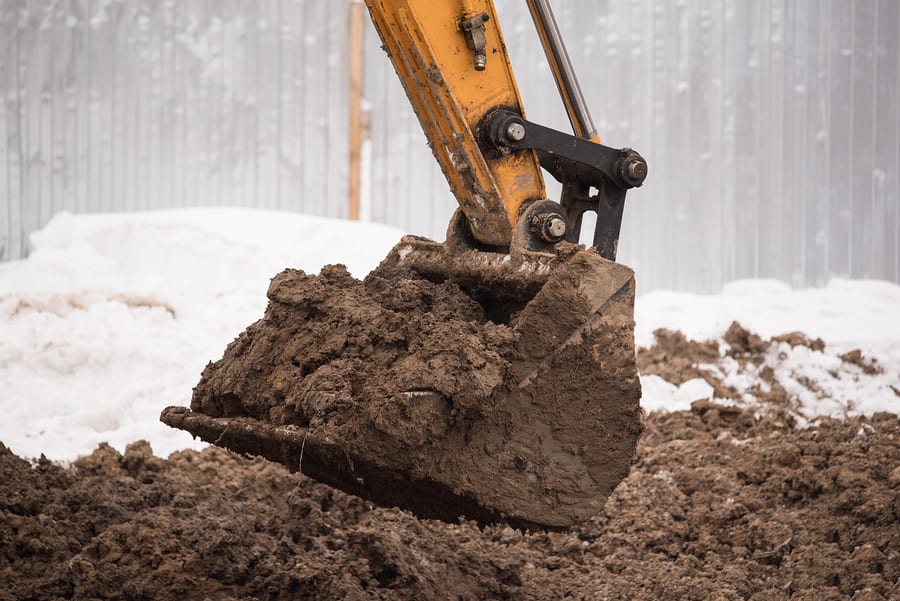Utility damages can result in significant project setbacks. And according to the 2018 DIRT Report, these incidents are on the rise. Here are some of the key takeaways from the report.
Statistics on Utility Damages in 2018
Each year, the Common Ground Alliance compiles a report based on the data entered into their Damage Information Reporting Tool. They found that, in 2018, some key metrics increased, including estimated total damages in the U.S. and total recorded events.
| 2017 | 2018 | % Change | |
| Total damages estimate (U.S.) | 439,000 | 509,000 | +16% |
| Total events* entered in DIRT (U.S. and Canada) | 411,867 | 440,749 | +7% |
| Damages per 1,000 one call transmissions** | 1.87 | 2.08 | +11% |
| Damages per million dollars of construction spending | 0.359 | 0.392 | +9.2% |
*Includes facility damage, near miss, or downtime.
**Initial notices of intent to excavate sent by one call centers to their member facility operator
Even with the upticks across the board, Sarah K. Magruder Lyle, President and CEO of CGA notes, “Key data points in the 2018 DIRT Report indicate that our progress in reducing damages has plateaued…this data shows that while we aren’t seeing a significant increase in damages, we aren’t seeing a significant reduction in damages either.”
Some possible reasons for the change in damages, says the CGA, is the expanding economy and an increase in the numbers of entities that are voluntarily reporting to DIRT.
When damages are taking place
Most damages took place during the workweek, Monday – Friday, and during May, June, July, and August.
| Reported damages during the week in 2018 | Reported damages during the weekend in 2018 | |
| U.S. | 301,687 | 28,758 |
| Canada | 10,284 | 880 |
- 43% of reported damages occurred in May, June, July, and August
- 11% of total reported damages occurred in August
Root causes of damages
A damage’s root cause, in this report, is, “the point where a change in behavior would reasonably be expected to lead to a change in the outcome.” Some of these root causes include “improper excavation practices,” “no response from operator/contract locator,” and “not marked due to locator error.”
The CGA grouped each of these more granular root causes into one of five categories: excavating issue, notification not made, locating issue, other notification issue, and miscellaneous. There’s a sixth unknown/other category to cover instances where the root cause either wasn’t collected or didn’t fit into the other categories.
Here’s the breakdown of root causes of damages in 2018.
- 31% excavation issues (failed to follow careful excavation practices)
- 23% notification not made (failed to follow the steps for providing notice of intent to dig to a one call center)
- 31% locating issues (failed to accurately and timely mark the location of buried facilities)
- 13% other notification issues (failed to successfully notify 811 — includes expired tickets, digging outside the stated work area, and digging before the valid start time)
- <1% miscellaneous (damage causes that don’t fit into a notification, locating, or excavating category)
- 12% unknown/other
Damages by type of work and excavators
The #1 known type of work associated with these damages is sewer and water, followed by energy, construction and development, and telecommunications.
- 27% sewer/water
- 18% energy
- 16% construction/development
- 16% telecommunications
And when it comes to the known types of excavators causing damage, contractors are the most common by a landslide.
- 69% contractors
- 12% utilities
- 5% occupants
- 5% municipalities
- 5% farmers
Facilities damaged
The most commonly reported damaged facility is telecommunications, trailed by natural gas and cable television.
- 48% telecommunication
- 28% natural gas
- 11% cable television
Facilities damaged by root cause
Excavation issues were to blame for most damaged natural gas, electric, and water facilities. For sewer, steam, and cable tv facilities, locating issues were the most dominant root cause. And lastly, telecommunications and liquid pipelines were generally damaged due to a notification not being made.
Preventing utility damages
Preventing project setbacks due to a utility strike starts with notifying your local one-call center. So on your next project — and all that come after — don’t skip the notification process. And for large-scale projects, consider hiring a professional utility location company that will make sure you’re aware of all underground utilities.

